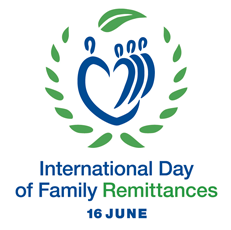Rise in remittances
Business Recorder / Editorial
It is a matter of satisfaction that home remittances during the current fiscal year have continued to increase. According to the latest data released by the State Bank on 12th February, 2018, overseas Pakistanis remitted dollar 11.383 billion during July-January, 2018 as compared to dollar 10.993 billion received during the same period last year, depicting a growth of dollar 390 million or 3.55 percent. A detailed analysis revealed that while home remittances from the UK and the US witnessed an upward trend, those from Saudi Arabia declined during this period. Inflows from the UK increased to dollar 1.585 billion as against dollar 1.279 billion in the corresponding period of last fiscal year, showing an increase of 24 percent. The inflows from the US stood at dollar 1.505 billion which were higher by 11.64 percent than last year’s. Remittances from Saudi Arabia, however, fell by 8 percent to dollar 2.915 billion in July-January of FY18 compared to dollar 3.169 billion in the same period of last year. It may be noted, nonetheless, that despite the decline, Saudi Arabia continues to be the largest contributor to the inflows of home remittances. Remittances from the UAE were up by 2.1 percent at dollar 2.512 billion while these were down by 2.0 percent at dollar 1.314 billion from the GCC countries. Month-on-month basis, inflows of home remittances were 10 percent higher than in the same month of last year but five percent lower compared to December, 2017.
A modest growth in home remittances during the current fiscal year is of course a welcome development for the country, especially at a time when other components of the current account balance like merchandise account are showing a marked deterioration. The pressure on the external sector could be gauged from the fact that the C/A deficit had widened to dollar 7.4 billion during the first half of this year, which was 1.6 times of the deficit during the same period of 2016-17. Foreign exchange reserves of the country have declined quite substantially and Pak rupee has lost its value by about 5 percent despite government-SBP efforts to stabilise it at a lower level. These indicators would have been worse if there was no increase in home remittances which has also the advantage of being an unrequited transfer. Authorities of the country generally take the credit of rising remittances by attributing it to PRI, a joint initiative of the SBP, Ministry of Finance and Overseas Pakistanis, to facilitate the flow of home remittances but certain other factors such as the narrowing gap between inter-bank and open market dollar-rupee exchange rates, apprehensions of Pakistanis about the conditions in host countries and rising family expenditures back home may also have contributed to the rise. However, a worrying aspect is that though the workers in Saudi Arabia are still the biggest suppliers of home remittances, their contribution to the overall kitty has been declining for the last couple of years. This may be due to a decline in international oil prices, a slowdown in the implementation of projects and the desire of the Saudi government to replace local people with the foreign workers but the fact remains that Pakistan will be a big loser if this trend continues. Anyhow, while the growth in remittances is encouraging, other components of the balance of payments have to be improved to support the weakening exchange rate, build foreign exchange reserves, pay back foreign obligations, ensure uninterrupted flow of imports and improve overall economic conditions in the country. In particular, country’s exports need to be enhanced sharply to offset the negative impact of imports on the C/A balance. This is so because the flow of home remittances could be negatively affected by some exogenous factors and, as such, this source of foreign exchange cannot be relied upon to support the external account on a lasting basis.


